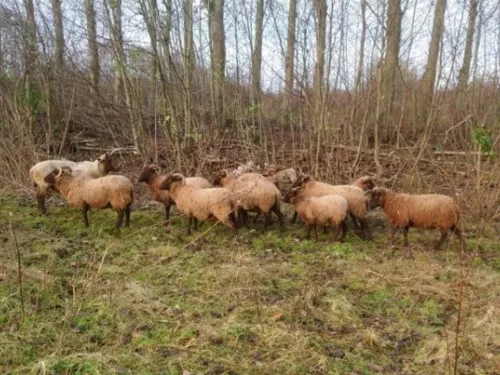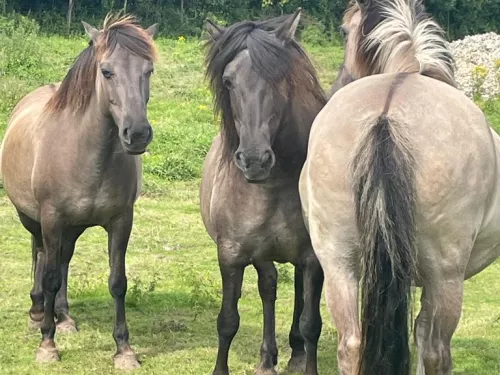
Longhorn cattle
Longhorn cattle can be many colours but they are almost always brindle (splattered/stripey) with a white line down the spine. They have long backs and can have very impressive horns.

A richly red breed of cow specifically suited for the wet, woody ground of the Kent and Sussex Weald.
This species is always a rich red colour. It was bred over generations to cope with pulling a plough in the wet, woody ground of the Kent and Sussex weald. This cow is exceptional at clearing reeds, willow, young scrub and bramble.
This breed has a good temperament, they are easy to calve and are good mothers. Often, one female will happily feed multiple calves from the herd. They take it in turn to nanny the babies while others sleep or forage.
Sussex cattle don’t have horns but they use their powerful head and neck to bring down tall woody vegetation to where they can reach it to eat. Their strong legs and good feet mean they can travel long distances over rough ground with ease. They also have a good temperature tolerance, with a short silky coat in the summer and a curly longer coat coming through quickly in the winter if needed.
A quote from 1820 about this breed reads "…expressed surprise at finding some of the finest cattle on some of the most impoverished subsistence farms on the High Weald."

Longhorn cattle can be many colours but they are almost always brindle (splattered/stripey) with a white line down the spine. They have long backs and can have very impressive horns.

A striking unusual milky coffee coloured-sheep, often with four horns and sometimes as many as six. This primitive breed is originally from the Isle of Man. Their fleece self-sheds but they can also be shorn.

Konik ponies are one of the largest of the ‘pony’ breeds, often the size of a horse. 'Konik' literally means small horse. They are domestic ponies, bred over 100 years to live in the wild for conservation purposes.